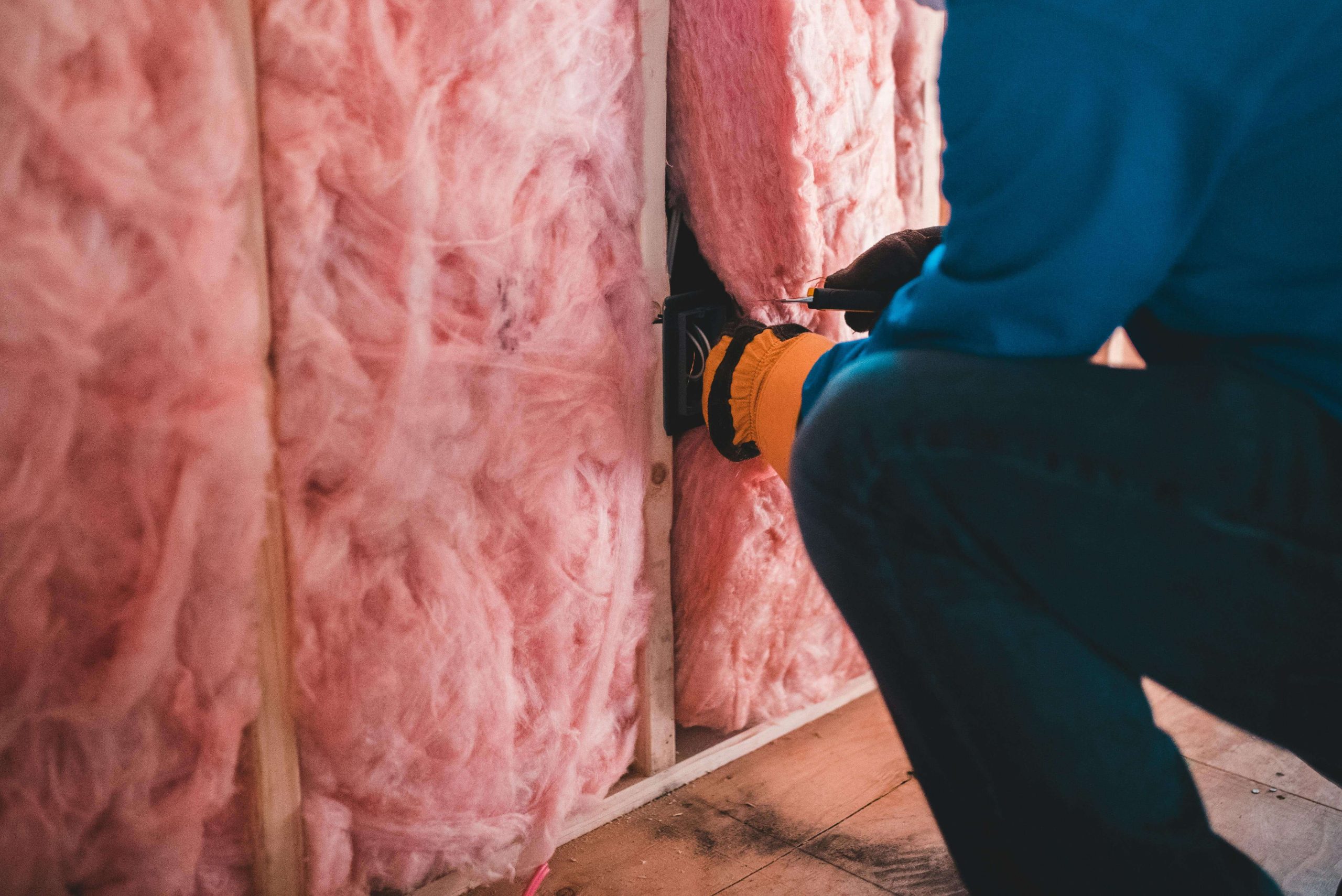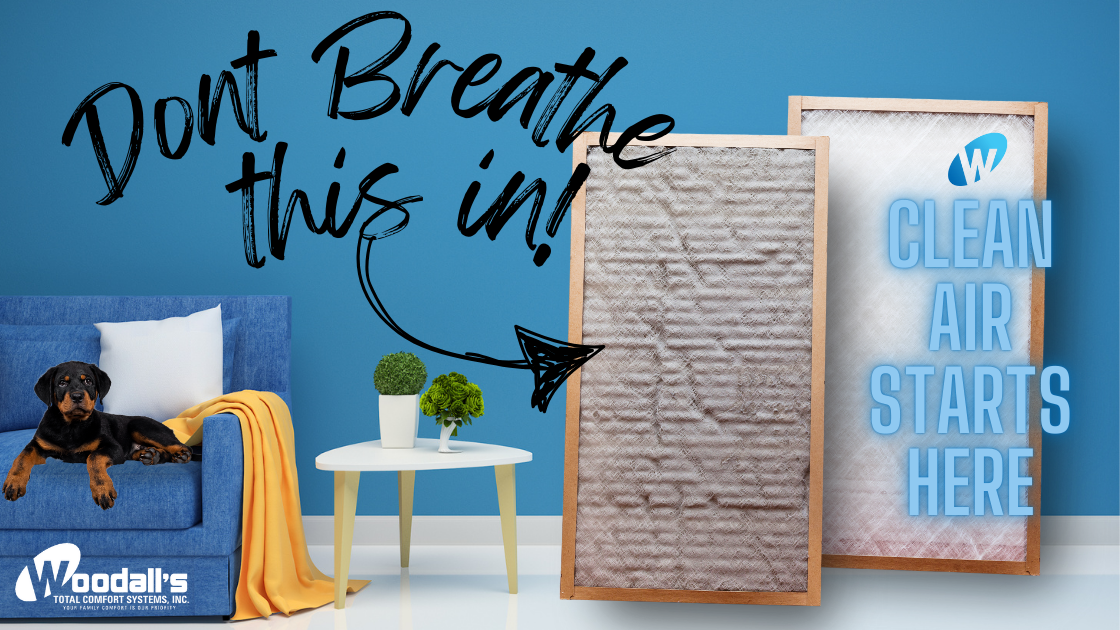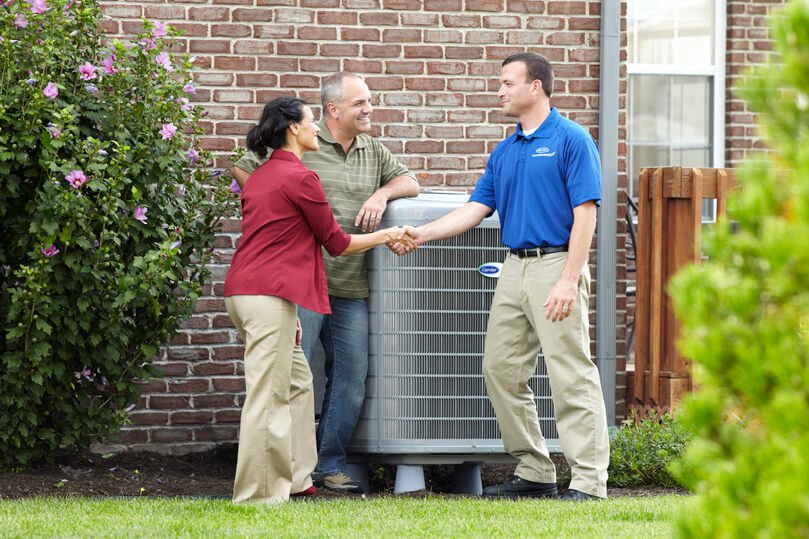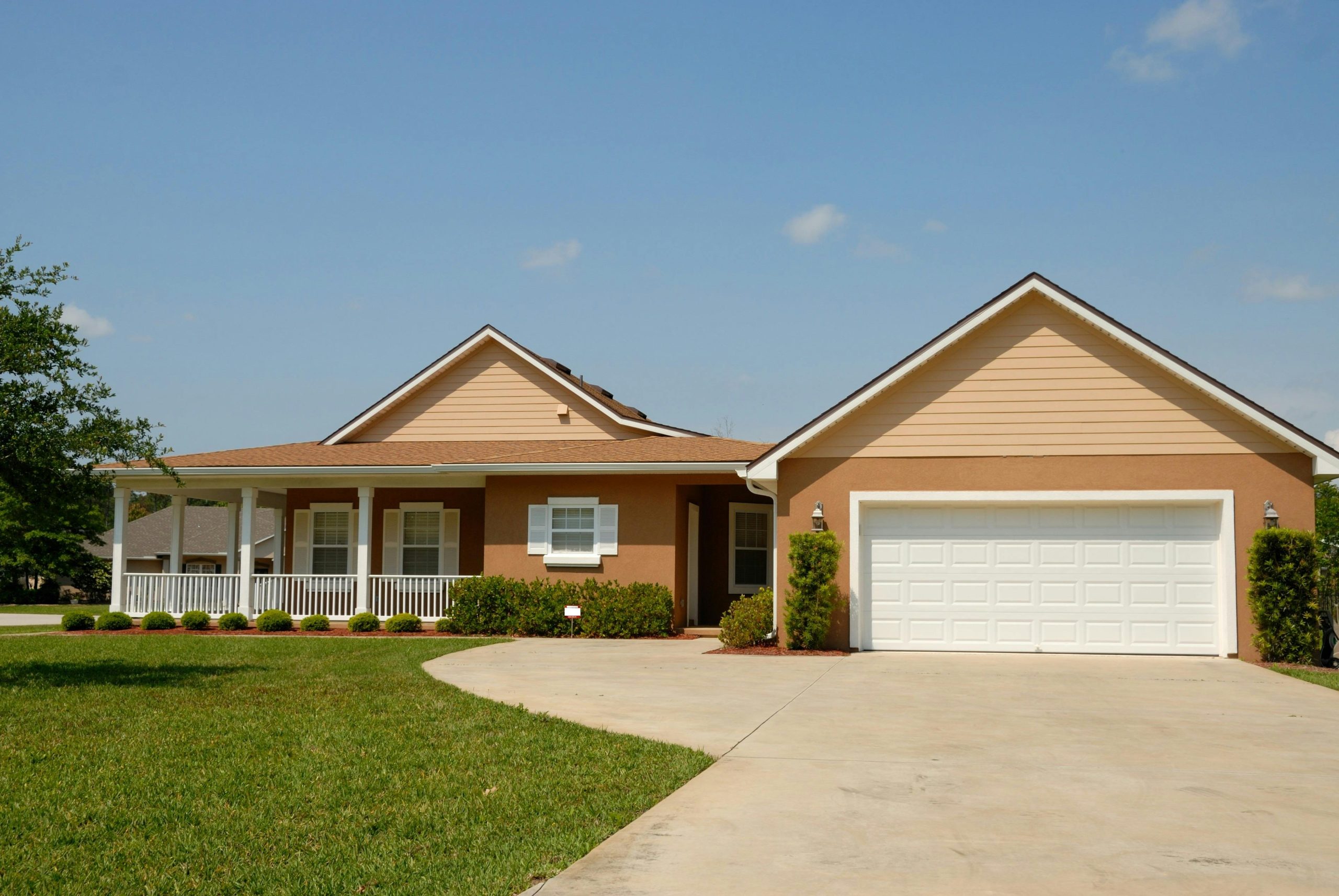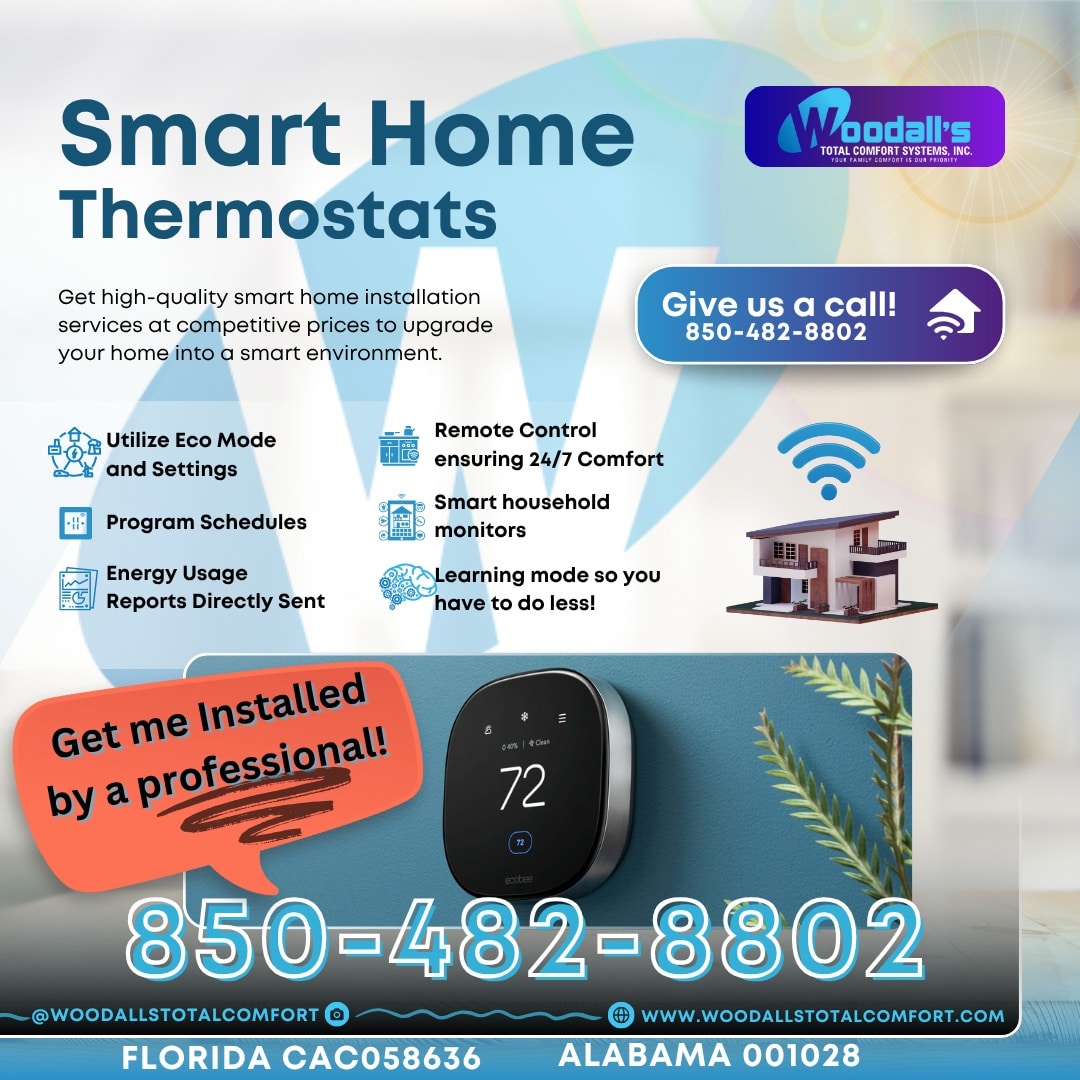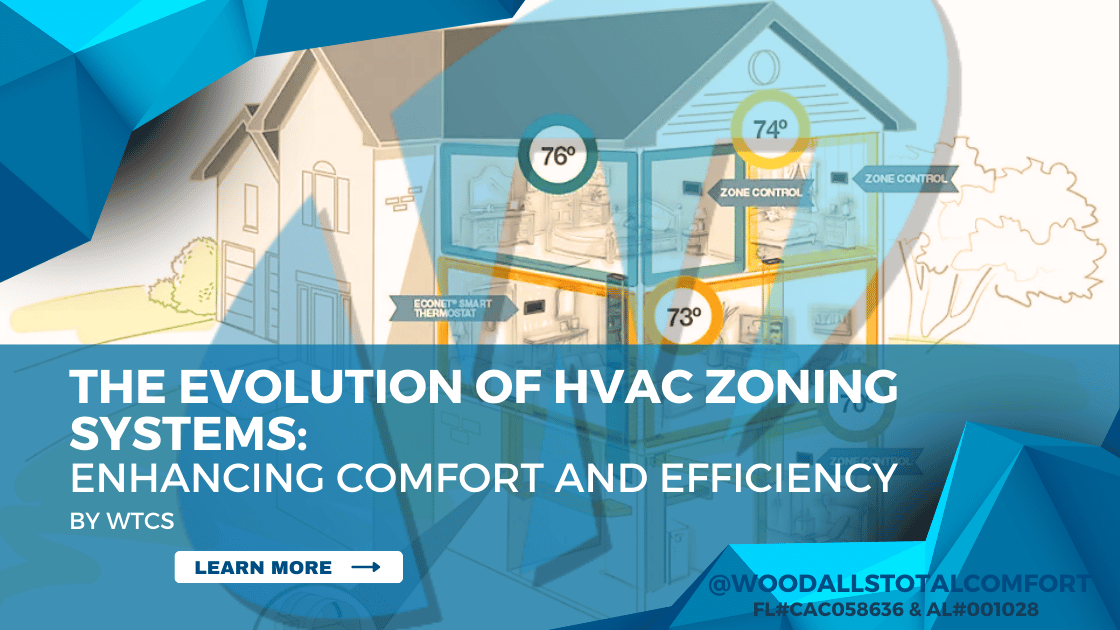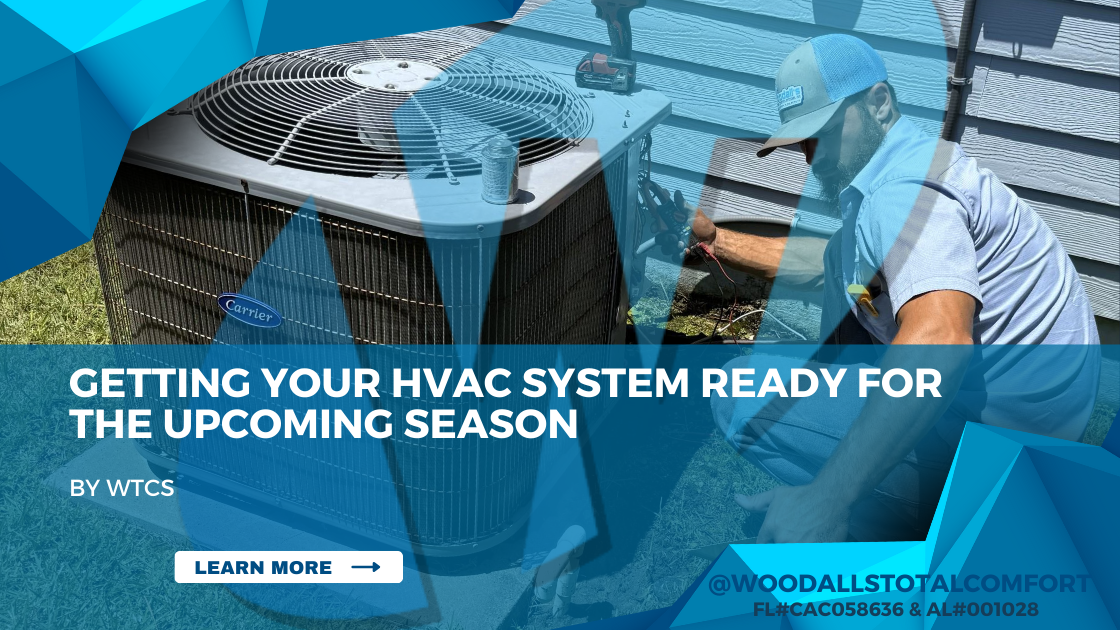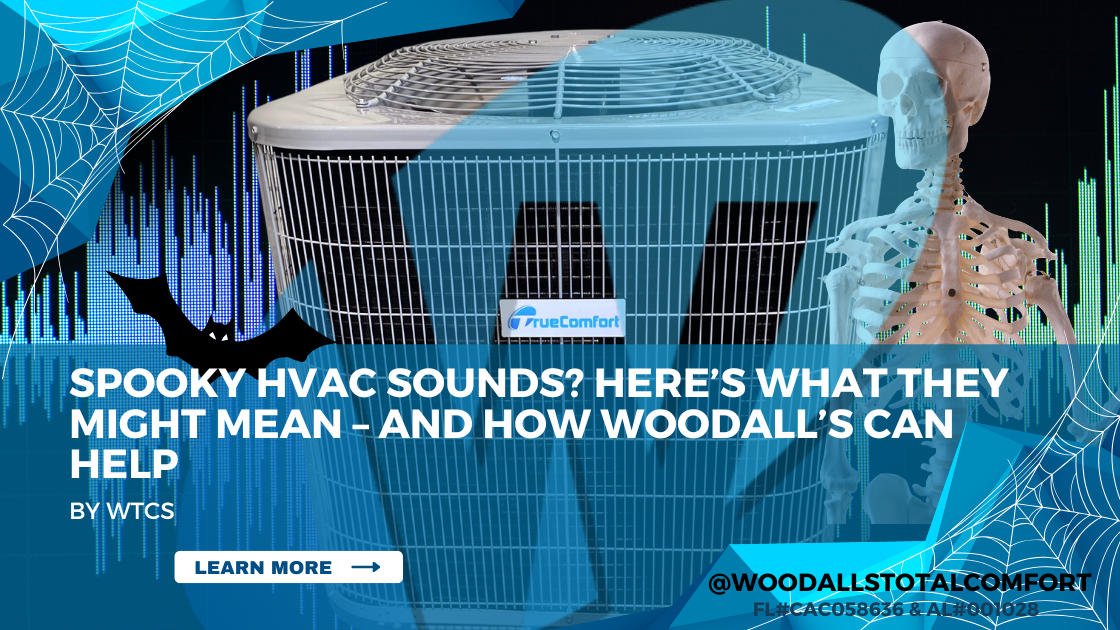How Proper Insulation & Sealing Helps Your HVAC Work Smarter
Most homeowners think about their HVAC system when the temperature outside changes — whether it’s cranking the AC during Florida’s long summers or switching to heat during the occasional chilly snap. But what many don’t realize is that your system’s performance is heavily influenced by something far less obvious: the insulation and tightness of your home.
Proper insulation and air sealing work hand-in-hand with your HVAC system, helping it run more efficiently, last longer, and keep your home consistently comfortable year-round. Here’s how.
What Is Insulation & Why Does It Matter?
Insulation is the material that resists heat flow in and out of your home. It’s commonly found in your attic, walls, floors, and sometimes even ducts. In the summer, it keeps the heat outside. In the winter, it traps warmth inside.
When insulation is lacking or uneven, your HVAC system has to work overtime to make up for the temperature loss. That means higher energy bills, more wear and tear on your equipment, and uneven comfort levels throughout the house.

The Role of Air Sealing
While insulation slows down heat transfer, air sealing blocks the actual movement of air between the inside and outside of your home. This includes gaps around doors, windows, attic hatches, plumbing penetrations, light fixtures, and electrical outlets.
Without proper sealing, your conditioned air is literally escaping through the cracks. According to ENERGY STAR, the average home loses up to 30% of its heating and cooling energy through air leaks.
How This Impacts Your HVAC System
Your HVAC system is designed to maintain a set temperature inside your home — but it can’t do that efficiently if air is leaking or heat is constantly entering or escaping. Here’s how poor insulation and sealing affect your system:
- Short cycling: When conditioned air escapes, your HVAC system cycles on and off more often to maintain temperature, which uses more energy and increases wear.
- Uneven temperatures: Some rooms may feel much warmer or cooler than others because heat is entering or leaving through poorly insulated areas or poorly sealed fixtures.
- Higher energy bills: If your system has to run longer or harder, you’ll see the impact in your monthly utility costs.
- Shorter equipment lifespan: Overworking your HVAC can lead to more frequent repairs and earlier replacement.
Signs You Might Have Insulation or Sealing Issues
- Rooms that are hard to keep cool or warm
- Drafts around windows, doors, light fixtures, wall outlets, and plumbing fixtures
- High humidity levels inside the home
- Rising energy bills, especially during extreme weather
- Visible gaps or cracks in window and door frames
Simple Ways to Improve Your Home’s Insulation and Sealing
- Check your attic: Attic insulation is one of the biggest factors in HVAC efficiency. If the insulation is uneven, compressed, or missing in areas, consider adding more.
- Seal windows and doors: Use weather stripping or caulk to close small gaps.
- Inspect ductwork: Leaky ducts can lose conditioned air before it even reaches your rooms. Seal and insulate accessible ductwork where possible.
- Upgrade insulation: If your home is older or hasn’t been inspected recently, a professional insulation audit can help identify areas for improvement.
The ROI on Better Insulation and Sealing
Investing in insulation and sealing isn’t just about comfort — it’s also about savings. The Department of Energy estimates homeowners can save up to 15% on heating and cooling costs by properly sealing and insulating their homes. Air sealing and insulation is one of the lesser expensive things you can do to improve your home’s comfort. It’s not always about needing a bigger HVAC system.
Reducing run times on your HVAC by sealing or adding insulation extends the lifespan of your HVAC system when it doesn’t have to work as hard.
Let Your HVAC System Work Smarter, Not Harder
At Woodall’s Total Comfort Systems, we believe a well-sealed, properly insulated home is just as important as the quality of your HVAC equipment. If you’ve been experiencing uneven temperatures, rising energy costs, or comfort issues, it may not be your AC or heat pump — it could be your insulation doing a poor job.
Give us a call to schedule a home comfort assessment, 850-482-8802. You can also visit our homepage to book your appointment online, https://woodallstotalcomfort.com/, click on the Book Now button. We’ll take a look at the big picture and help you make your system — and your home — as efficient as possible.
Comfort starts with what’s behind the walls. Let’s make sure your home is sealed, insulated, and ready for every season.
Getting Your Heating System Ready for Cooler Weather
Florida might not be known for frigid winters, but when the cooler months roll in, you still want your home to be warm and comfortable. The fall season is the perfect time to prepare your heating system so it’s ready to go when you need it. A little preventative maintenance now can save you from unexpected breakdowns, high energy bills, or even safety issues when the temperatures drop.
Here are a few suggestions homeowners should do to get their heating system ready for the season ahead.
Schedule a Professional Heating Tune-Up
Before you even switch your thermostat to “heat,” it’s smart to have your system inspected by a licensed HVAC technician. During a fall tune-up, your technician will on gas systems:
- Inspect the heat exchanger for cracks
- Clean burners and check ignition systems
- Inspect and replace filters if needed
- Check thermostat function and calibration
- Lubricate fan motors
- Test safety controls
On electric systems, heat pumps or electric furnaces, we will check:
- Reversing valve operation
- Electric heat strip operation
- Coil cleanliness
- Test safety controls
- Check thermostat function and calibration
- Lubricate fan motors
This not only helps your system run more efficiently, but it also extends the life of your equipment. Plus, it can catch small problems before they turn into expensive repairs that leave you without heat.

Replace or Clean Air Filters
Dirty air filters are one of the most common causes of system breakdowns. A clogged filter restricts airflow, making your system work harder and could potentially cause a safety switch to trip. Ideally, you should check filters monthly and replace them every 1-3 months, depending on the type of filter and household activity (especially if you have pets or allergies).
Test Your Thermostat
Turn your thermostat to heat mode and make sure the system kicks on as expected. If you notice the house isn’t warming up evenly, or if the system doesn’t respond at all, it’s a good idea to call for a quick diagnostic check.
If you’re still using an older manual thermostat, this might be a great time to consider upgrading to a programmable or smart thermostat. These can automatically adjust your settings based on your schedule, helping you save energy without thinking about it.
Check Carbon Monoxide Detectors
Any system that burns fuel (like gas furnaces) can potentially produce carbon monoxide. That’s why it’s crucial to have functioning carbon monoxide detectors near bedrooms and in hallways.
Test the alarms and replace the batteries. If your detectors are over 5–7 years old, consider replacing them entirely.
Clear Vents and Registers
Over the summer, it’s easy for furniture, rugs, or storage boxes to get placed over floor vents or wall registers. Walk through your home and make sure all vents are unobstructed so that air can flow freely.
Inspect Ductwork (If Accessible)
Leaks or disconnected sections of ductwork can lead to major heat loss — especially in attics or crawlspaces. If you can access your ducts safely, do a quick visual inspection or call in a pro to check for signs of gaps, damage, or poor insulation.
Sealing leaky ducts can drastically improve comfort and reduce heating costs.
Reverse Ceiling Fans
Did you know your ceiling fans can help in the winter, too? Most ceiling fans have a small switch that changes the direction of the blades. In the winter, they should rotate clockwise to gently push warm air back down from the ceiling. This simple trick helps you feel warmer without adjusting the thermostat.
Comfort Starts with Prep
Getting your heating system ready doesn’t take much, but it can make a big difference. Whether you have a heat pump or a traditional furnace, fall is the time to get ahead of the game. At Woodall’s Total Comfort Systems, we offer comprehensive fall tune-ups to make sure your home is ready for whatever winter brings. Give us a call at 850-482-8802 or schedule your heating maintenance online. We’ll get your system cleaned, checked, and tuned — so you can enjoy a warm, stress-free season. Interested in year-round protection and priority service? Join our Comfort Club maintenance program for exclusive benefits and peace of mind.
Why Size Matters: The Science Behind Properly Sizing Your Air Conditioner
When Florida’s heat hits full swing, your air conditioner isn’t just a comfort upgrade — it’s essential. But one of the biggest mistakes homeowners make when replacing an air conditioner is assuming that bigger automatically means better. In reality, the right size is what truly matters. Here’s why proper sizing is so important, and how the best HVAC professionals get it right.
What Does “Sizing” Really Mean?
When we talk about “sizing” an air conditioner, we’re not talking about how physically large the unit is. It’s all about capacity — how much heat it can remove from your home over a set period. This is usually measured in tons (or BTUs).
A system that’s properly sized will run long enough to cool your home evenly and remove excess humidity. Too large, and it cycles on and off too quickly. Too small, and it runs non-stop, struggling to keep up.
The Problems With an Oversized System
Many people think a bigger system is safer, but it’s actually a recipe for discomfort and wasted money. An oversized air conditioner cools your home too quickly, shutting off before it can properly dehumidify the air. That leaves your house feeling cool but damp — not exactly the comfortable environment you’re wishing to obtain.
Frequent cycling also means more wear and tear on parts, leading to breakdowns and a shorter lifespan for your unit.
The Problems With an Undersized System
On the flip side, an air conditioner that’s too small will run constantly trying to reach the set temperature, driving up energy bills. Even then, it might never get your home quite as cool as you’d like on those blazing hot afternoons.
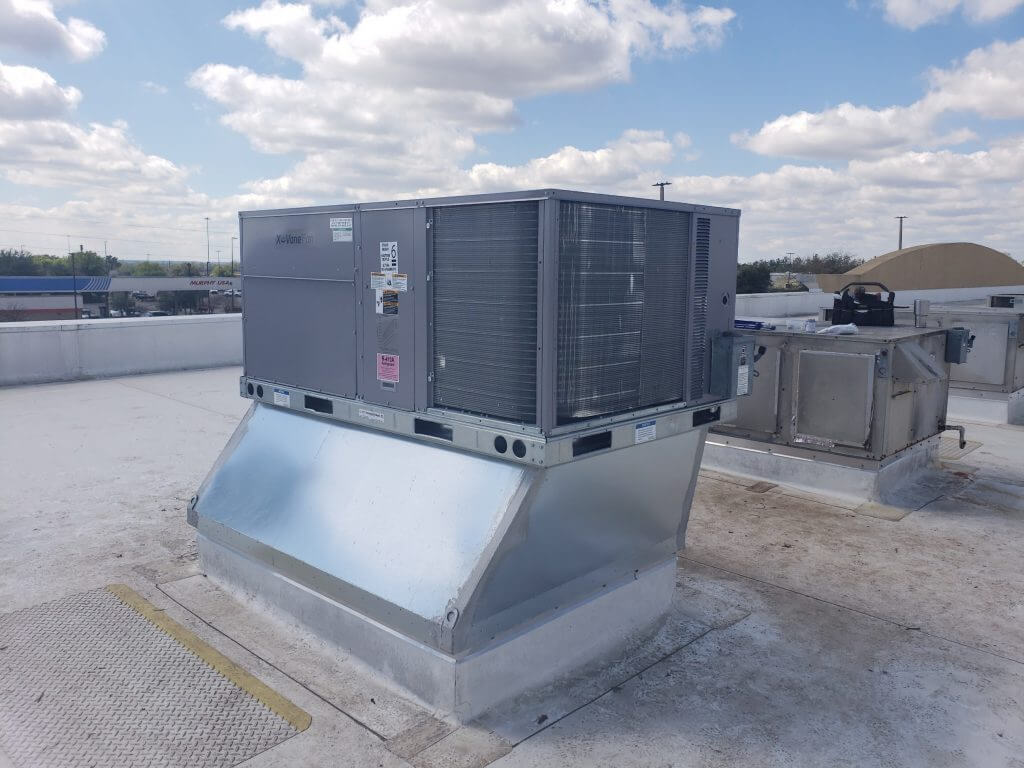
More Than Just Square Footage
It’s tempting to think you can size an AC by square footage alone — like one ton per 600 square feet. But that’s only part of the picture. A proper sizing process, known in the industry as a Manual J load calculation, takes a lot more into account, such as:
- Your home’s insulation levels
- How many and what kind of windows you have
- Which way your house faces (more sun means more heat gain)
- Shading from trees or neighboring buildings
- The number of bedrooms or potential bedrooms in your home
- Heat produced by appliances and lighting
All of these factors determine how much heat your cooling system has to remove to keep you comfortable. These factors can change over time as well. Just recall all the trees shading your house before Hurricane Michael. When all those trees were lost, the load on your home likely changed due to the increased amount of sunlight introduced to once shaded windows, walls, and roofs. You can’t even begin to imagine the number of calls we have gotten post hurricane saying “this room used to be a lot cooler”. The loss of shade trees really impacted a lot of homes after that hurricane.
Why Professional Sizing Matters
As your trusted HVAC contractor, Woodall’s Total Comfort Systems won’t just eyeball your old unit and slap in the same size. They’ll inspect your attic and ductwork, measure windows and walls, and look at your home’s unique features. This detailed approach means you get an air conditioning and heating system that’s tailored exactly to your needs — maximizing comfort and efficiency. There will also be questions about your lifestyle and what temperature you consider to be your most comfortable setting. Even a change in temperature can influence the size of the air conditioning system you need to keep you cool and comfortable.
The Bottom Line
Proper sizing isn’t just about getting the temperature right. It’s about lowering your energy bills, preventing moisture problems, and protecting your investment so your system lasts as long as possible.At Woodall’s Total Comfort Systems, we don’t cut corners. We’ve been helping Florida homeowners find the perfect systems for decades, using proven load calculations and hands-on inspections. That way, you get a system that keeps you cool, dry, and worry-free — even during the toughest summer days. Learn more about Woodall’s Total Comfort and our story.
Signs It’s Time to Replace Your Air Conditioner
Let’s face it — in Florida, your air conditioner isn’t just a luxury, it’s a lifeline. But like any piece of equipment, your air conditioner has a lifespan. Knowing when it’s time to swap out your old system for a new one can save you from uncomfortable days, emergency breakdowns, and sky-high energy bills. Below, we will discuss some of the factors to consider when deciding to replace or repair your dinosaur.
While the ultimate decision to replace or repair your air conditioner is yours, the customer. Here are some clear signs your air conditioner might be ready for retirement.
If it’s more than 10-12 years old. Most air conditioners last around 10-15 years, depending on how well they’ve been maintained. If yours is pushing that range (or past it), it’s worth considering an upgrade. New systems are far more energy-efficient, which means lower bills and a smaller carbon footprint. The new systems have substantial warranties, typically out to 10 years on parts. An extended warranty can also provide coverage against future repair costs.
Repairs are adding up. An occasional repair is normal. But if you’re facing big repair bills or calling your HVAC tech more than once a season, it might make more sense to invest in a new system. A good rule of thumb: if the cost of repairs approaches one-third the price of a new unit, replacement is often the smarter investment. Whether you decide to repair or replace, we offer flexible HVAC financing options to help make your decision easier.
Rising energy bills. If your energy bills keep creeping up and you haven’t changed how you use your system, it’s a sign your air conditioner is losing capacity and efficiency. Older systems work harder to cool your home, using more electricity. A new, high-efficiency unit can cut your cooling costs significantly. In some cases replacing your cooling system can lower your utility bill by half.

Uneven temperatures around the house. Are some rooms freezing while others feel like a sauna? This could mean your cooling system is struggling to keep up or your ductwork isn’t distributing air properly. Either way, a new system might be needed to restore comfort.
Excessive noise or strange sounds. A little hum is normal, but loud bangs, rattles, or squeals? Not so much. Odd noises can indicate serious internal problems, from loose parts to failing compressors. Sometimes repairs can fix it, but often these noises mean your system’s on its last leg. Routine maintenance with our Comfort Club provides semi-annual feedback on your air conditioner’s condition — helping catch issues early and extend its lifespan. Learn more about the benefits of joining the Comfort Club today.
Poor indoor air quality. Older systems often can’t remove humidity or filter air as effectively as they used to. If you’re noticing more dust, musty smells, or allergy flare-ups, your air conditioning system could be to blame. A new system can greatly improve your home’s air quality by reducing humidity which can lead to musty smells and allergy flare-ups.
Frequent cycling on and off. If your AC seems to start and stop constantly, it might be struggling to maintain the set temperature. This short cycling puts extra wear on the system and usually means it’s time for a professional evaluation — or replacement. In some instances, the short cycling may be due to building envelope problems. We can help identify those as well.
The bottom line. Upgrading your cooling system might feel like a big expense, but it’s also an investment in your comfort, your home’s value, and lower energy costs. Plus, newer systems offer advanced features like variable speed motors, variable capacity compressors, and smart thermostats that keep your home cooler and your bills lower. At Woodall’s Total Comfort Systems, we’ve been helping Florida homeowners stay cool since 1990. If you’re wondering whether it’s time to repair or replace, give us a call. We’ll inspect your system, duct system, home and give you honest, straightforward advice. We look at the whole picture — because true home comfort involves more than just your air conditioning system. Still have questions? Explore our AC replacement services to get answers and learn what’s best for your home.
Summer Survival: How to Keep Your Home Cool Without Breaking the Bank
When the Florida summer heat rolls in, your air conditioner becomes your best friend — and your energy bill’s worst enemy. But staying cool doesn’t have to cost a fortune. With a few smart strategies, you can keep your home comfortable and the power company at bay. With nearly 35 years of experience, these are simple steps to lower your energy consumption without making you uncomfortable at home. These tips and tricks don’t require you to replace your air conditioning system either.
Block the heat before it starts. Sunlight streaming through your windows looks and feels nice in the mornings, but as the day warms so does your home, fast. While closing blinds and curtains don’t allow us to take in some of the best views, the act of keeping them closed through the heat of the day will reduce energy usage substantially. In our area the biggest concerns are East, South, and West facing windows. If blinds and curtains aren’t your favorite, you may consider UV-blocking window films to keep the sun’s rays at bay. During peak hours (usually 10 am to 4 pm), keep shades and/or curtains drawn to drastically reduce the chance of indoor temps rising.
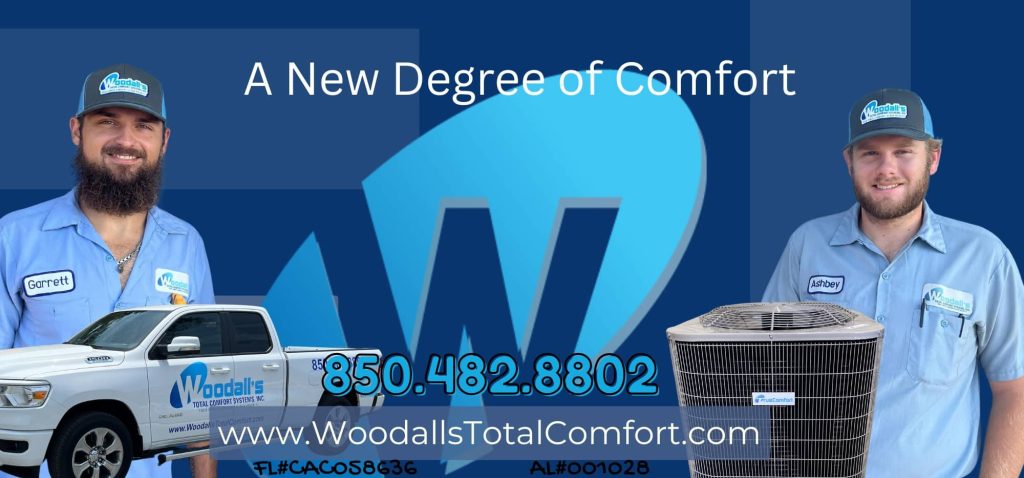
Turn on your ceiling fans. Ceiling fans and portable fans don’t lower the temperature, but they do make you feel cooler by moving air across your skin. This allows you to set your thermostat a few degrees higher without sacrificing comfort. Remember to turn fans off when you leave a room to save electricity. Also make sure your ceiling fans are moving air in the right direction. In the summer, your ceiling fan should spin counterclockwise. This creates a downdraft, pushing cooler air downwards and creating a cooling breeze.
Be smart with your thermostat. Setting your thermostat at 72° may feel nice but bumping it up to 76° or 78° when you are home (and even higher when you’re away) can lead to serious savings. A programmable thermostat is great for facilitating different temperature settings without having to remember to make those adjustments. Programmable thermostats typically offer programming options for multiple temperature settings per day. Smart thermostats allow a minimum of four scheduled functions per 24-hour period. For instance, when it’s time to leave for work the thermostat temperature setting is programmed to 78 degrees. At your planned time to return home your thermostat is programmed to 72 degrees making for a comfortable arrival home, while saving energy during the workday. Most Smart thermostats are intuitive and will learn to come on early to have the home comfortable when you arrive. A better solution is a Wi-Fi thermostat, these will allow you to change the thermostat settings while you are away from home. These can be controlled from an app. Some even use geo location to maximize comfort and energy savings. Want to save on your utility bills? Learn how smart thermostats can improve energy efficiency and reduce heating and cooling costs year-round.
Avoid heat-generating activities during the day. Try to cook, run the dishwasher, or do laundry in the evening. These appliances add extra heat to your home so that your air conditioner then must work harder to remove. Hot showers or baths can also introduce heat and moisture into the home, causing your air conditioning system to work harder and longer. Planning your cooking, cleaning, and other heat generating activities for the cooler part of the day can improve your energy usage and lower your utility bill.
Schedule a mid-summer air conditioning checkup. Even if your system is running, it might not be running efficiently. Dirty coils, low refrigerant, or clogged filters can force your air conditioner to work overtime. A quick tune-up ensures your system runs at peak efficiency, saving you money all summer long. See what’s included in our air conditioning maintenance service.
The Evolution of HVAC Zoning Systems: Enhancing Comfort and Efficiency
Heating, Ventilation, and Air Conditioning (HVAC) systems have undergone significant transformations since their inception, with zoning systems emerging as a pivotal advancement. These systems have revolutionized indoor climate control, offering tailored comfort and improved energy efficiency. Let’s explore the journey of HVAC zoning systems, from their rudimentary beginnings to the sophisticated solutions available today.
Early Days: One-Size-Fits-All Approach
In the early 20th century, central heating systems became prevalent in residential and commercial buildings. These systems typically operated on a single thermostat, regulating the temperature for the entire structure. While this was a leap forward in indoor comfort, it often led to uneven temperatures, with some areas being too warm and others too cold. This lack of individualized control highlighted the need for a more nuanced approach to heating and cooling.
Introduction of Manual Zoning
As the limitations of single-zone systems became apparent, the concept of zoning emerged. Early zoning methods involved manually adjusting dampers within the ductwork to control airflow to different areas or “zones” of a building. While this allowed for some degree of customization, it was labor-intensive and lacked precision. Building occupants had to remember to adjust dampers regularly, which was neither convenient nor efficient.
Advancements in Automated Zoning
The mid-20th century saw significant technological advancements that paved the way for automated zoning systems. Motorized dampers and multiple thermostats were introduced, enabling automatic regulation of temperatures in different zones. These systems allowed occupants to set desired temperatures for specific areas, and the system would adjust airflow accordingly. This innovation not only enhanced comfort but also improved energy efficiency by directing conditioned air only where needed.
Integration with Smart Technology
In recent decades, the rise of smart technology has further transformed HVAC zoning systems. Modern systems can now be integrated with home automation platforms, allowing users to control temperatures remotely via smartphones or voice-activated assistants. Advanced sensors can detect occupancy and adjust settings in real-time, ensuring optimal comfort while minimizing energy consumption. Moreover, these systems can learn user preferences over time, adapting to routines and providing a personalized climate control experience.
Smart zoning systems also allow homeowners to track and manage their energy usage more effectively. With insights into how and when certain zones are being used, users can make informed decisions about temperature settings and daily habits, which contributes to greater energy savings and environmental responsibility.

Benefits of Modern Zoning Systems
The evolution of zoning systems has brought about numerous benefits:
- Enhanced Comfort: Different areas of a building can be maintained at varying temperatures to suit individual preferences.
- Energy Efficiency: By heating or cooling only occupied zones, energy waste is significantly reduced, leading to lower utility bills.
- Increased Equipment Lifespan: Reduced workload on HVAC systems can lead to less wear and tear, extending the lifespan of the equipment.
- Improved Air Quality: Targeted airflow can help in better managing humidity levels and reducing the spread of allergens.
- Noise Reduction: Zoning systems can reduce how frequently your HVAC system cycles on and off, making your home noticeably quieter.
Woodall’s Total Comfort Systems: Your Partner in Advanced HVAC Solutions
At Woodall’s Total Comfort Systems, we understand the importance of personalized comfort and energy efficiency in your home or business. Serving the Florida Panhandle, including Marianna, Panama City Beach, and surrounding areas, our team of experienced professionals is dedicated to providing top-notch HVAC services tailored to your specific needs.
Our comprehensive services include:
- Geothermal Systems: Harness the earth’s natural energy for efficient heating and cooling.
- AC and Heating Repair: Prompt and reliable repair services to keep your system running smoothly.
- AC Replacement: Upgrade to energy-efficient systems for enhanced comfort and savings.
- Comfort Club Maintenance Program: Regular maintenance to extend the lifespan of your HVAC system and prevent unexpected breakdowns.
We service all HVAC brands and systems, including residential and commercial units up to 25 tons. Our commitment to customer satisfaction and indoor air quality makes us the preferred choice for HVAC solutions in the region.
For more information or to schedule a consultation, call us at (850) 482-8802 or fill out our contact form online.
Licensed in Florida (FL#CAC058636) and Alabama (AL#01028). Locally serving the community since 1990.

Looking Ahead: The Future of Zoning Systems
As technology continues to advance, the future of HVAC zoning systems looks promising. Emerging trends include the integration of artificial intelligence to predict and adapt to user behaviors, further enhancing efficiency and comfort. Additionally, the incorporation of renewable energy sources and the development of more environmentally friendly refrigerants are set to make these systems even more sustainable.
Another exciting development is the integration of zoning systems with other smart home features such as automated blinds, occupancy sensors, and air purification systems. These integrations allow for complete climate control that responds to external weather changes, time of day, or even indoor air quality levels. Pushing the boundaries of what HVAC systems can offer in terms of lifestyle, health, and convenience.
To further enhance your understanding of HVAC systems and their advancements, here are some related articles from our blog:
- The Benefits of Smart Thermostats for Homeowners: Explore how integrating smart thermostats can enhance energy efficiency and provide greater control over your home’s climate.
- Why You Should Replace Your HVAC System Now: Understand the advantages of upgrading your HVAC system, including access to advanced features like programmable thermostats and zoning capabilities.
- The Evolution of HVAC Refrigerants: What to Expect in 2025 and the Big Changes Ahead: Stay informed about upcoming changes in HVAC refrigerants and how they may impact your system choices.
These articles offer valuable insights into modern HVAC technologies and can assist you in making informed decisions about your home’s comfort systems.
The Science of Dehumidification: How It Keeps Your Home Comfortable and Efficient
Living in Florida, we all know the struggles of high humidity. From sticky skin to musty odors, excessive moisture in the air can make your home feel uncomfortable and even lead to problems like mold growth and higher energy bills. That’s where dehumidification comes in. Whether through your HVAC system or a dedicated whole-home dehumidifier, controlling humidity is key to improving indoor air quality and keeping your home comfortable.
At Woodall’s Total Comfort Systems, we specialize in HVAC solutions that help you maintain the perfect balance of temperature and humidity in your home. In this blog, we’ll break down the science of dehumidification, why it matters, and how we can help keep your home cool and comfortable—even in the most humid months.
What Is Dehumidification and How Does It Work?
Dehumidification is the process of removing excess moisture from the air. This is essential in places like Marianna, Panama City Beach, and the surrounding areas, where humidity levels can climb well above the recommended indoor range of 30-50%.
Your HVAC system plays a major role in controlling humidity. When your air conditioner runs, it cools your home while also pulling moisture out of the air. The evaporator coil in your AC unit condenses water vapor into liquid, which then drains away, reducing humidity levels.
For homes that struggle with high humidity year-round, a whole-home dehumidifier might be the best solution. These systems integrate with your HVAC unit, working alongside your air conditioner to efficiently manage moisture levels without overworking your AC.
Why Is High Humidity a Problem?
When humidity levels in your home are too high, you might notice several issues:
- Mold and Mildew Growth – Excess moisture creates the perfect breeding ground for mold, which can lead to health problems and damage your home.
- Musty Odors – That damp, unpleasant smell in your home? It’s often a sign of excess humidity.
- Increased Energy Bills – High humidity makes the air feel warmer, causing you to lower the thermostat and overwork your AC.
- Health Concerns – Dust mites and allergens thrive in humid conditions, aggravating allergies and respiratory problems.
- Wood Damage – Hardwood floors, furniture, and even the structure of your home can warp or rot when exposed to long-term humidity.
How Woodall’s Can Help You Control Humidity
At Woodall’s Total Comfort Systems, we offer a variety of HVAC solutions to help homeowners in Panama City Beach, Marianna, and surrounding areas keep humidity levels in check.
1. Whole-Home Dehumidifiers
We install high-efficiency dehumidifiers that work with your HVAC system to control moisture levels without putting extra strain on your AC. These systems run independently, pulling moisture from the air while keeping energy costs low.
2. High-Efficiency HVAC Systems
If your AC is outdated, it might not be doing a great job of removing moisture. Upgrading to a modern, high-efficiency HVAC unit can help you maintain the perfect temperature and humidity balance while saving on energy costs.
3. HVAC Tune-Ups & Maintenance
A well-maintained HVAC system runs more efficiently, helping with dehumidification. Our Comfort Club maintenance plans ensure that your AC is operating at peak performance to keep humidity under control all year long.
4. Smart Thermostat Solutions
A WiFi thermostat with built-in humidity controls can help regulate moisture levels in your home. We can install and program these thermostats to optimize your indoor comfort.

Is Your Home Too Humid? Call Woodall’s Today!
If you’re noticing high humidity levels in your home, don’t wait until mold, musty odors, and higher energy bills take over. The experts at Woodall’s Total Comfort Systems are here to help with HVAC solutions that improve your home’s air quality and overall comfort.
📞 Call us today at (850) 482-8802 for a consultation on dehumidifiers, HVAC maintenance, and system upgrades.
Let’s keep your home cool, dry, and comfortable—no matter how humid Florida gets!
Related Articles:
- Understanding Humidity Control
- Enhance Indoor Air Quality (IAQ) with Expert HVAC Services
- How Pets Affect Your HVAC System and Indoor Air Quality

The Ultimate Pet Owner’s Guide to HVAC: Keeping Your Home Clean & Comfortable
If you’re a pet owner in Marianna, Panama City, Panama City Beach, and surrounding areas, you know that furry friends bring joy—but they also bring extra dust, dander, and fur that can impact your home’s air quality and HVAC efficiency. At Woodall’s Total Comfort Systems, we understand that keeping your HVAC system running smoothly while ensuring your pets stay comfortable is a top priority.
Many homeowners search for reliable HVAC services in Panama City or the best air conditioning repair near me, but not all HVAC companies understand the specific challenges pet owners face. That’s why we’re sharing essential HVAC maintenance tips to keep both your family and your four-legged friends breathing easy.
How Pets Affect Your HVAC System
Pets are part of the family, but they shed fur and dander, which can:
✔️ Clog air filters faster than normal
✔️ Reduce HVAC efficiency, causing higher energy bills
✔️ Increase allergens in your home
✔️ Lead to unpleasant odors trapped in ducts and vents
If you’re looking for HVAC maintenance in Marianna or duct cleaning services in Panama City Beach, it’s important to find a company that provides superior service and understands pet-related HVAC issues.

HVAC Tips for Pet Owners
1. Change Your Air Filters More Often
Most homes need an air filter change every 60-90 days, but if you have pets, you should swap it every 30-60 days to prevent fur and dander buildup. If you’re unsure about which filter is best, our team at Woodall’s Total Comfort Systems can recommend high-efficiency filters designed for pet owners. A superior HVAC system starts with clean, quality air, and the right filter makes all the difference.
2. Schedule Regular HVAC Maintenance
Just like you take your pet for checkups, your HVAC system in Panama City Beach needs routine care. Scheduling biannual tune-ups helps prevent breakdowns and keeps your unit running efficiently—especially in the humid Florida climate. If you’re searching for heating and air conditioning service in Marianna or AC repair near me, we provide superior service with fast response times.
3. Invest in a Whole-Home Air Purifier
An air purifier, such as the iWave system, can drastically reduce pet dander, odors, and airborne allergens. If you’ve been looking for indoor air quality solutions in Panama City, we can install an air purification system that works seamlessly with your HVAC. A superior air purification system ensures your home stays fresh, no matter how many pets you have.
4. Keep Your Outdoor Unit Pet-Safe
Many dogs and cats like to explore the backyard, but your outdoor AC unit needs protection. To prevent damage:
✔️ Keep pets from urinating on the unit, which can corrode parts
✔️ Trim pet hair and grass around it to ensure proper airflow
✔️ Install a small fence around your HVAC unit if needed
If your unit has been affected by pet damage, our AC repair services in Panama City Beach are here to help. Keeping your system in superior condition ensures both efficiency and longevity.
5. Groom Your Pets Regularly
The less fur your pet sheds, the less will end up in your HVAC system. Regular grooming helps keep dander under control, improving both your indoor air quality and your system’s efficiency. A superior HVAC system runs best when your home stays as clean as possible.
6. Consider a Smart Thermostat for Pet Comfort
If you’re away during the day, a WiFi thermostat can help keep your pets comfortable while optimizing energy use. You can set schedules to keep temperatures ideal for your dog or cat, ensuring they stay cool in the Florida heat without overworking your system. Superior comfort isn’t just for people—your pets will thank you too.

The Best HVAC Services for Pet Owners in Northwest Florida
Many people search for HVAC repair in Marianna, air conditioning companies in Panama City Beach, or heating and cooling services near me, but finding a team that provides superior care and understands the unique needs of pet owners is key.
At Woodall’s Total Comfort Systems, we specialize in:
✔️ HVAC maintenance in Panama City
✔️ Duct cleaning services for pet-friendly homes
✔️ Air purifiers and IAQ solutions
✔️ Smart thermostats for pet comfort
✔️ Fast and reliable AC repair in Marianna and beyond
If you’ve been searching for air conditioning services in Panama City Beach or a trusted HVAC company in Marianna, we’re here to help. Call us today at (850) 482-8802 to schedule a service and keep your home comfortable for both you and your furry friends!

Read More:
- The Vital Relationship Between Pets and Your HVAC System: What Every Pet Owner Should Know
Explore how pet ownership impacts your HVAC system and discover essential maintenance tips to ensure a healthy home environment for both you and your furry friends. - Enhance Indoor Air Quality (IAQ) with Expert HVAC Services
Learn how professional HVAC services can improve your home’s air quality, benefiting both your family and your pets. - Pro Tips: How to Extend the Lifespan of Your Air Conditioning Unit
Discover expert advice on maintaining your AC unit to ensure long-lasting performance and efficiency.
Getting Your HVAC System Ready for the Upcoming Season
As the seasons change, your HVAC system plays a critical role in maintaining a comfortable and safe indoor environment. Preparing your system for the colder months ahead is not only essential for ensuring uninterrupted comfort but also for optimizing energy efficiency and extending the life of your equipment. A little proactive care now can save you from unexpected breakdowns and high repair costs later. Here’s how you can get your HVAC system ready for the upcoming season—and how Woodall’s Total Comfort Systems can help every step of the way.
1. Replace or Clean Your Air Filters
Dirty filters restrict airflow, forcing your system to work harder and increasing energy consumption. During colder months, clean filters ensure efficient operation and improve indoor air quality. At Woodall’s, we can replace your filters during routine maintenance or provide you with a supply of the right filters to make regular replacement easy.
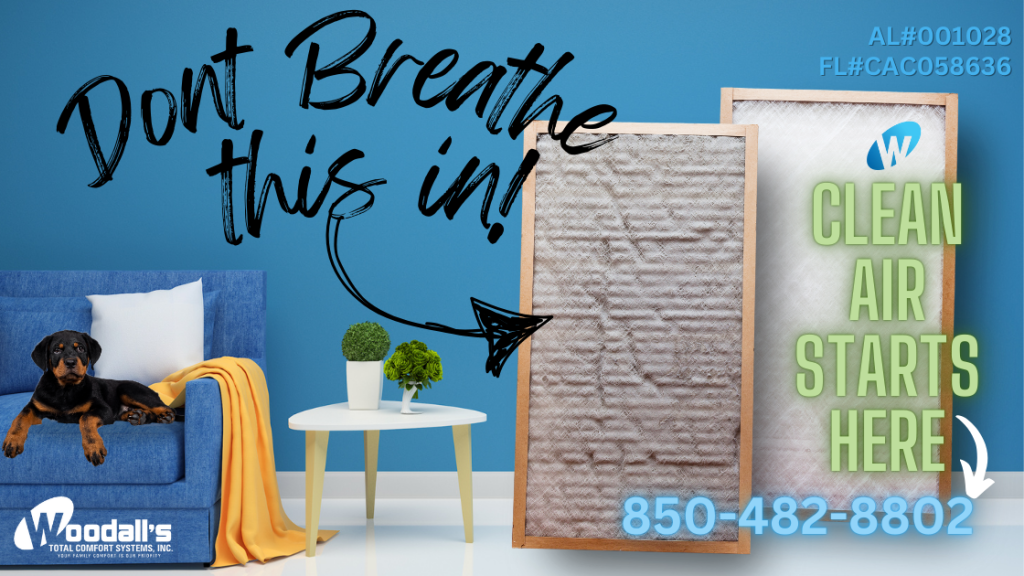
2. Inspect and Clean Your Vents and Registers
Blocked or dirty vents can obstruct airflow and reduce your heating system’s efficiency. While you can vacuum vents and registers yourself, Woodall’s offers professional duct cleaning services to remove dust and debris from your entire system, ensuring clean, healthy air and optimal performance.
3. Check Your Thermostat
Your thermostat is the control center of your HVAC system. Whether you need to ensure yours is working properly or are ready to upgrade to a smart thermostat, Woodall’s can help. We offer installation of programmable and Wi-Fi thermostats that allow you to maximize energy efficiency and comfort with ease.
4. Schedule a Professional Tune-Up
An HVAC tune-up is the most effective way to prepare your system for colder months. At Woodall’s, our technicians perform a comprehensive inspection and tune-up, including cleaning, testing, and adjusting all critical components. This preventative care keeps your system running smoothly and can identify potential issues before they become costly problems.
5. Test Your Heating System
Turning on your heating system before cold weather sets in helps ensure it’s ready when you need it most. If you notice any unusual noises, odors, or uneven heating, Woodall’s can quickly diagnose and resolve any problems, giving you peace of mind before the season begins.
6. Seal and Insulate Ductwork
Leaky ducts can lead to significant heat loss and higher energy bills. Woodall’s Total Comfort Systems specializes in duct sealing and insulation to improve your system’s efficiency and keep your home warm and comfortable.
7. Clear the Area Around Your Outdoor Unit
If you use a heat pump, keeping your outdoor unit clear of debris is essential. While this task can often be done by homeowners, Woodall’s includes a thorough cleaning and inspection of your outdoor unit during routine maintenance visits to ensure it’s operating at peak efficiency.
8. Reverse Ceiling Fans
Reversing the direction of your ceiling fans can help push warm air down from the ceiling, reducing the load on your heating system. While this is a quick adjustment you can make yourself, our team can offer additional tips to help you maintain the most comfortable and energy-efficient home environment.
9. Review Energy-Saving Habits
Energy-saving habits can make a significant difference in your heating costs. If you’re unsure where to start, Woodall’s offers expert advice and solutions, such as programmable thermostats and system upgrades, to help you maximize efficiency.
10. Know When to Call a Professional
Some HVAC tasks require the expertise of a professional. From diagnosing uneven heating and rising energy bills to performing full system tune-ups, Woodall’s Total Comfort Systems is your trusted partner for reliable and timely HVAC care. If you’re experiencing issues, don’t wait until it’s an emergency—our team is here to help with fast, friendly service.
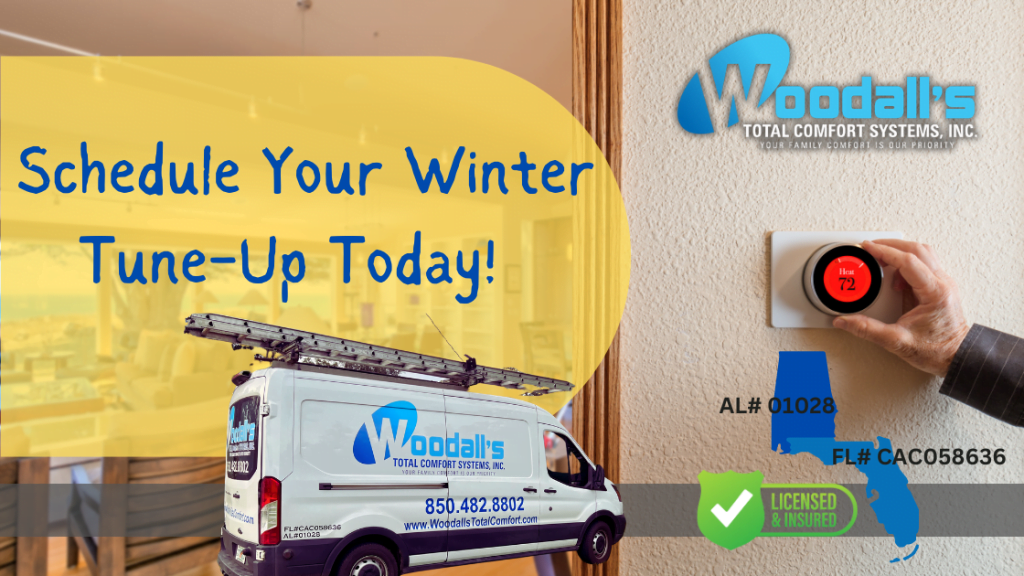
Why Choose Woodall’s Total Comfort Systems?
At Woodall’s, we make it easy to prepare your HVAC system for the upcoming season. Whether you need routine maintenance, duct cleaning, thermostat upgrades, or emergency repairs, our experienced team is here to ensure your home stays comfortable and efficient all winter long. We pride ourselves on providing reliable service, transparent pricing, and a commitment to your family’s comfort.
Ready for Comfort? Contact Us Today!
Don’t wait until cold weather arrives to get your system ready. Contact Woodall’s Total Comfort Systems today to schedule a tune-up, join our Comfort Club for year-round peace of mind, or explore our stress-free financing options for system upgrades. Let us take care of your HVAC needs so you can enjoy a worry-free season of warmth and comfort!

Spooky HVAC Sounds? Here’s What They Might Mean – And How Woodall’s Can Help
As Halloween approaches, strange noises might be creeping through your home—but they might not be from ghosts! If those eerie sounds are coming from your HVAC system, you could be looking at potential maintenance issues that need attention before the cool weather sets in. Here’s a breakdown of common “spooky” HVAC noises, what they could mean, and why calling Woodall’s Total Comfort Systems is the best way to keep your home comfortable and noise-free.
1. Banging or Thumping 👻
Hearing a loud banging or thumping noise can make you feel like something supernatural is knocking on your walls! But in reality, it’s often due to loose or broken components inside the HVAC system. A dislodged or damaged blower fan, motor, or even disconnected ductwork can make these noises as they collide with other parts. Ignoring these sounds can lead to severe internal damage, escalating repair costs, and even complete system failure.
At Woodall’s, we know how to efficiently diagnose and fix loose parts to get your system back to normal, reducing the risk of additional costly repairs. Our experienced technicians will inspect, secure, and, if necessary, replace worn-out parts, restoring peace to your home.
2. Squealing or Screeching 🦇
A high-pitched squealing or screeching sound can make it feel like your HVAC system is haunted! Often, these sounds are a sign that the blower motor belt has worn out or become misaligned, or it may indicate that the bearings in the motor are starting to fail. A screeching motor works harder than it should, increasing wear and tear on the entire system and raising your monthly energy bills.
With Woodall’s Total Comfort Systems, you’ll get prompt, expert service to resolve these issues. We prioritize cost-effective, energy-saving solutions that extend the lifespan of your system. Let our technicians get your HVAC running smoothly again, ensuring optimal comfort without the unsettling squeaks.
3. Rattling or Clanking 🎃
If your HVAC is making rattling or clanking sounds, you may think a skeleton’s gotten loose in the vents! But more likely, it’s due to loose or out-of-balance components, debris, or even something as simple as a loose screw. Rattling could indicate that your fan or motor assembly has shifted out of alignment, which can lead to vibration, premature part wear, and eventual breakdown if left unchecked.
Woodall’s HVAC technicians will give your system a thorough inspection, tighten any loose components, and realign parts as needed. Unlike other providers, we take the time to perform a detailed inspection that ensures every component is in top shape, saving you from unexpected breakdowns.
4. Hissing 🐍
A mysterious hissing noise may send shivers down your spine, but it’s usually a sign of an air or refrigerant leak rather than a haunted home! Air leaks often occur when there are gaps or holes in your ductwork, causing inefficient heating or cooling and higher energy bills. Meanwhile, refrigerant leaks can cause your system to lose cooling power, leading to further issues and even posing health risks.
When you hear a hissing noise, it’s best to call a professional immediately. At Woodall’s Total Comfort Systems, our certified HVAC technicians can quickly locate and seal ductwork leaks, repair refrigerant issues, and even recommend duct cleaning if necessary. With our advanced leak-detection tools and experienced team, we ensure your system is safe, efficient, and free from spooky hissing sounds.
5. Clicking 🕸️
While clicking sounds are normal when your HVAC system first turns on or off, frequent or constant clicking isn’t a good sign. This sound could mean that there’s an electrical issue in your thermostat or within the HVAC’s internal wiring, both of which can lead to serious malfunctions. In severe cases, these electrical issues can pose fire hazards, making it crucial to address them right away.
Woodall’s is known for our expertise in diagnosing and repairing electrical issues in HVAC systems. We use high-grade, safe replacement parts and perform thorough safety checks to ensure that everything is operating correctly and that your HVAC is free from electrical risks.
6. Buzzing 🐝
A buzzing sound from the outdoor HVAC unit can sound like a swarm of bees moving in, but it’s usually due to electrical issues, a failing capacitor, or a loose fan motor. Buzzing can also mean that the condenser coil is clogged with debris, preventing the system from cooling properly. A buzzing HVAC system left unchecked can lead to complete component failure.
With Woodall’s Total Comfort Systems, you don’t have to worry about these potential hazards. Our team can expertly handle any buzzing noises, from cleaning condenser coils to replacing failing electrical components. We’re here to ensure that your HVAC runs smoothly, providing your home with efficient heating and cooling without spooky sounds.

Why Choose Woodall’s Total Comfort Systems?
When it comes to your HVAC, strange sounds don’t have to haunt you. With so many HVAC companies out there, here’s why Woodall’s Total Comfort Systems is the best choice for homeowners in the Panhandle:
1. Decades of Trusted Experience
Woodall’s has been providing reliable HVAC services to the Panhandle since 1967. We’ve built our reputation on honest, high-quality service and deep expertise in heating, cooling, and ventilation for Florida’s unique climate. With over five decades of service, we understand what it takes to keep your home comfortable and energy-efficient year-round.
2. Licensed, Certified Technicians
Our team of certified, licensed, and insured technicians are some of the best in the industry. At Woodall’s, we keep our team up-to-date with the latest HVAC technologies and repair methods, ensuring they’re ready to handle any HVAC issue with precision and care. When you call us, you’re guaranteed an expert who knows HVAC inside and out.
3. Comprehensive HVAC Services
From spooky sounds and emergency repairs to installations and preventive maintenance, we offer a full suite of HVAC services tailored to the needs of homeowners in Florida’s Panhandle. No matter what HVAC issue you’re facing, we’re equipped to handle it. Plus, our preventive maintenance plans can keep your system running smoothly and prevent breakdowns during peak seasons.
4. Energy-Efficient Solutions
In Florida’s hot, humid climate, energy-efficient HVAC systems are essential. We work with top brands and offer energy-efficient products and solutions, from heat pumps and high-SEER air conditioners to smart thermostats. With Woodall’s, you get recommendations tailored to your home’s needs and budget, helping you reduce energy bills without compromising comfort.
5. 24/7 Emergency Service
We know HVAC problems can happen at any time, often at the most inconvenient moments. That’s why Woodall’s offers 24/7 emergency HVAC services. Day or night, weekend or holiday, our team is ready to respond, ensuring your home’s comfort and safety are never compromised.
6. Financing Options for Every Budget
Investing in an HVAC system or handling unexpected repairs doesn’t have to be a financial burden. Woodall’s offers flexible financing options to help you get the HVAC service or upgrade you need without the upfront stress. We believe everyone deserves a comfortable, efficient home, and our financing plans make it easier to achieve that.
Don’t Let Your HVAC Haunt You – Contact Woodall’s Today!
October is the perfect time to prepare your HVAC system for the cooler months while resolving any spooky sounds you might be hearing. Whether it’s a banging blower or a buzzing condenser, Woodall’s Total Comfort Systems has the experience, dedication, and expertise to keep your HVAC running smoothly. Don’t wait for Halloween nightmares; contact Woodall’s today and enjoy peace of mind, knowing your home is in good hands.

